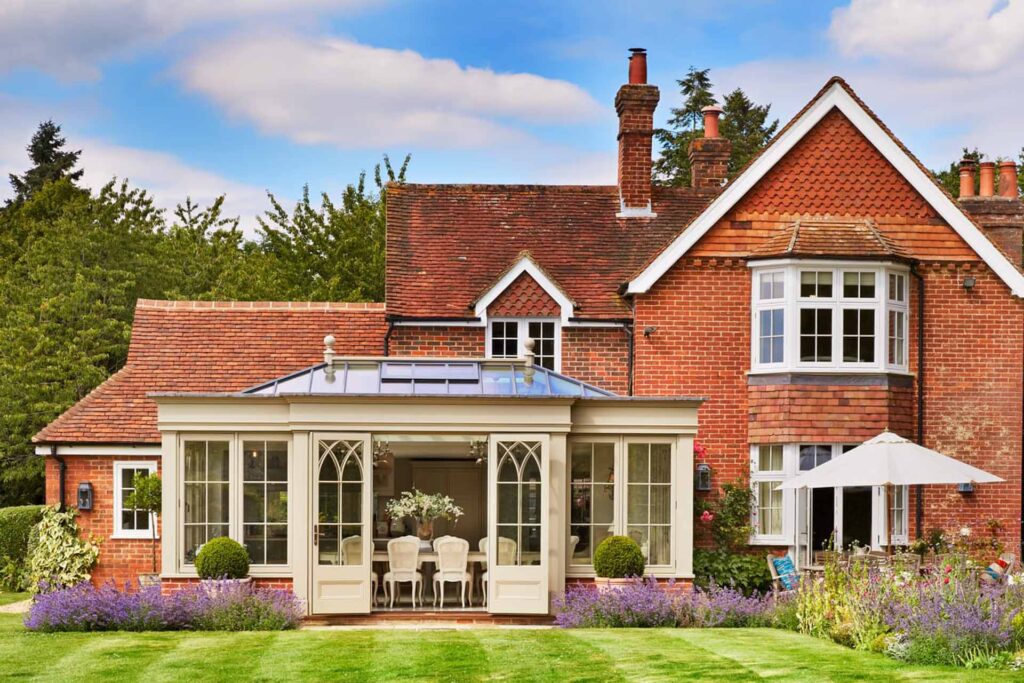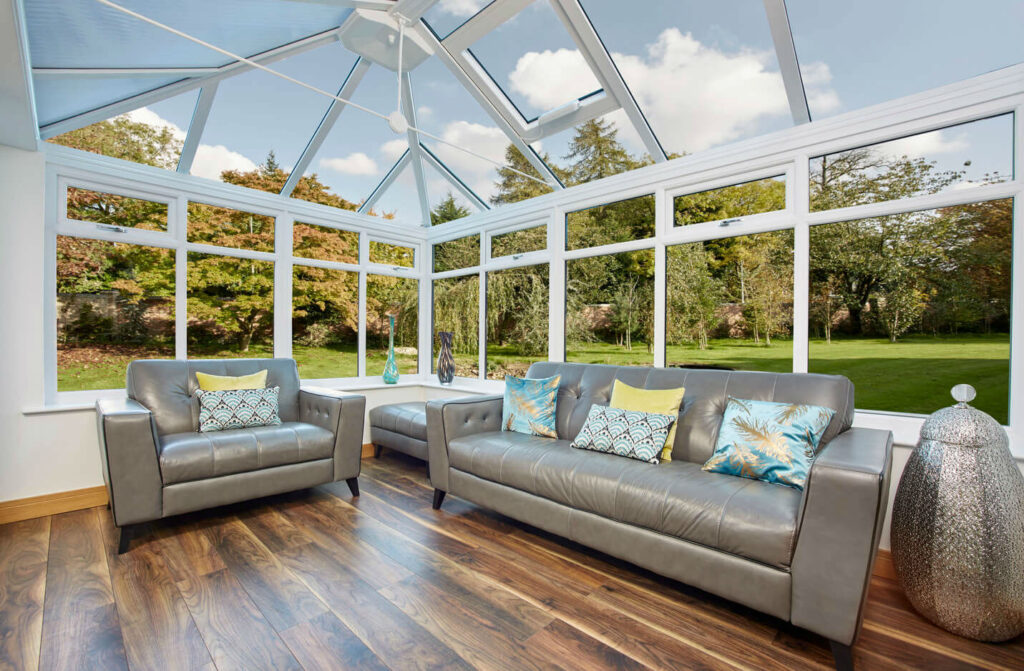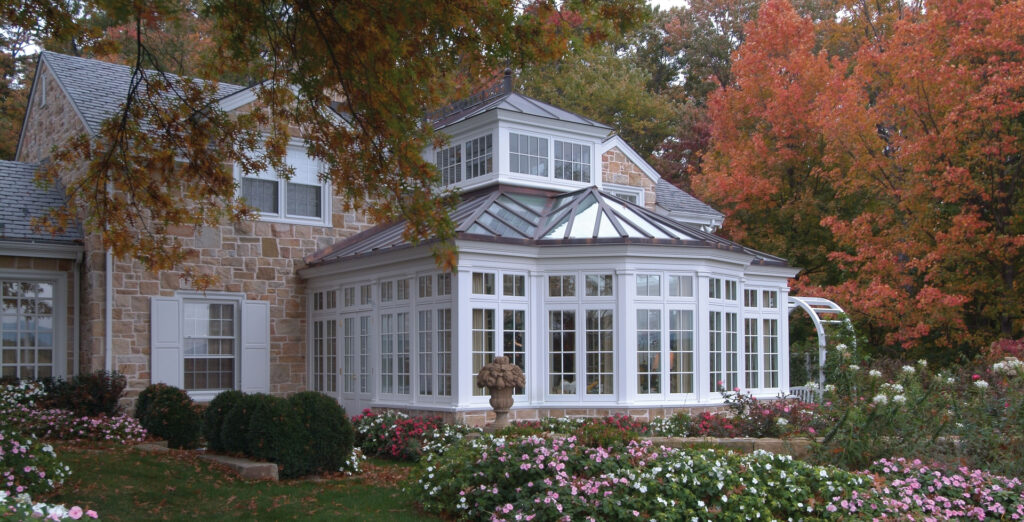Many people want to add more space to their home, but aren’t sure where to start. Do you want to build a separate annexe (along with the accompanying planning rigmarole) or a simple extension to house a new kitchen? Do you want the back of the house to butt out more to create room, or do you want – what is, in our view at least, the ultimate extension – to put in a conservatory. We believe conservatories make the perfect extension for a home, and here’s why…
Add Light to Your Home…

If this past couple of pandemic years has taught us anything, it’s the importance of natural light within the home. Being cooped up indoors for months on end was enough to drive us all crazy, but it was undoubtedly worst for those that lived in spaces without ample natural light or outdoor spaces. What a conservatory does – and does very well – is bathe your home in natural light, brightening your home on even the dreariest of days.
What’s so important about natural light, though? Well, it’s critical for both your mental and physical health. Natural light is a key in helping our body produce vitamin D, which in turn helps our sleeping patterns, our bodies’ circadian rhythms and in the strengthening of our bodies’ overall immune functioning. Very few extensions offer the kind of access to natural light that conservatories do, and so that’s just one of the reasons we believe they’re the best!
In terms of mental health, natural light is equally important. Increased exposure to natural light, and to sunshine in particular, helps our body produce more of the hormone serotonin, which is responsible for boosting our mood. In other words, the more natural light we’re exposed to, the happier and more positive we’re likely to feel.
In the winter months, especially, it’s important to expose yourself to as much natural light as possible to stave off symptoms of seasonal depression and low mood, and so installing a conservatory is one of the best things you can do to help with this. So a lighter home, is actually a healthier home, too – and after all, who doesn’t want to be a bit healthier where they can?
Add Value to Your Home…

The more practically-minded amongst you might be more concerned with whether installing a conservatory is financially beneficial for you and your family; there’s no need to worry on this count, though, because it’s thought that adding a conservatory to your home can add anywhere between 5 and 10% to the overall value of your home – a not insignificant value!
There’s no set amount, of course, for just how much value a conservatory will add, as it all depends on the quality of the conservatory, as well as other factors. What’s undeniable, though, is that it will add value.
A Great Space to Socialise
Another thing the pandemic has made us realise is just how sociable we are as a species; even the most hermitic of people need to interact with others to function best, and having a dedicated (or at the very least an extra) space to socialise is perfect for facilitating that social interaction. Whether you want people over for tea and a chat, or a fully-fledged dinner party, conservatories offer a perfect space to do so. You’re adding space, flow and another dimension to your home, what’s not to like about that?
No Need for Planning Permissions…

No two words bring dread and anxiety to the mind quite like ‘planning permissions’ do. The bane of both personal and professional developers alike, the UK’s complex planning framework has prevented countless developments in the past, and will no doubt stymie many more in the future, too. One of the best things about conservatories, however, is that they (for the most part) don’t require planning permissions. So long as a conservatory follows the following guidelines, then a conservatory doesn’t require any permissions:
- The conservatory shouldn’t cover over half the area of the original land surrounding the house onto which its being added.
- The conservatory shouldn’t be higher than the highest point of the original house.
- The eaves of the conservatory shouldn’t be higher than three metres (if within two metres of the property boundary).
- The conservatory (if built to the rear) can’t extend beyond the rear of the house by more than 6 metres for a semi-detached house, or 8 metres for a detached house.
These aren’t the only guidelines, of course, but don’t worry, the team at Transforming Conservatories will be able to take you through exactly what you can (and can’t) do with your space.
Bridging the Indoors and Outdoors
Another great asset of the conservatory is the way it bridges the indoors of a property with its exterior, It offers you a connecting space into your garden, and can be used as an effective ‘pathway’ through to it; that’s why you’ll see so many conservatories packed full of houseplants – the excellent insulating properties of conservatories makes them ideal spaces to grow houseplants and add a bit of greenery to the inside of your home. If you’re looking for a more cohesive home – not just the house – then conservatories are a great option to pursue.
What are the Different Conservatory Types?

Conservatories are far from being a ‘one size fits all’ affair, in fact from it. There are a huge number of conservatory types, including the following:
- Lean-to
- Sunburst
- Victorian
- P-shape
- Edwardian
We spoke to Kevin Addington, managing director of Transforming Conservatories, and he said there has been a huge growth in people looking to extend or modernize their present conservatories as opposed to looking to move to larger homes as their families grow. With so many efficient forms of insulation and green energy savings, he is confident that the future is bright for conservatory expansion sector in years to come







